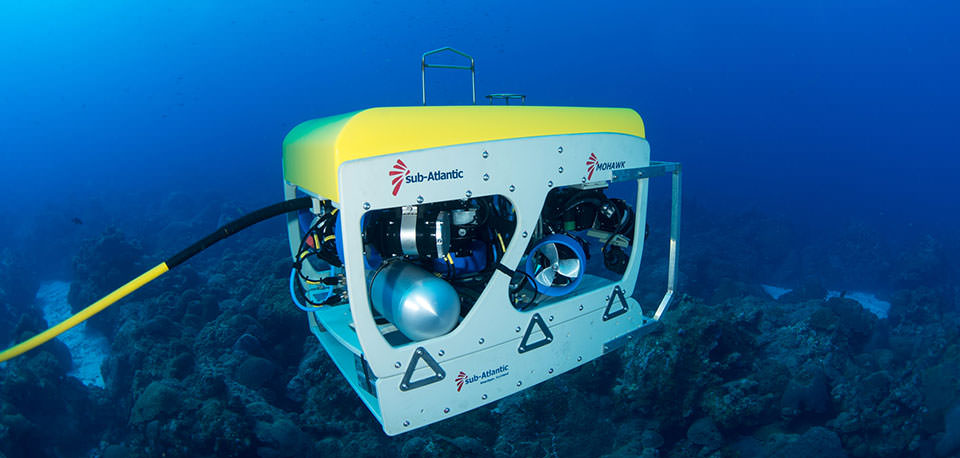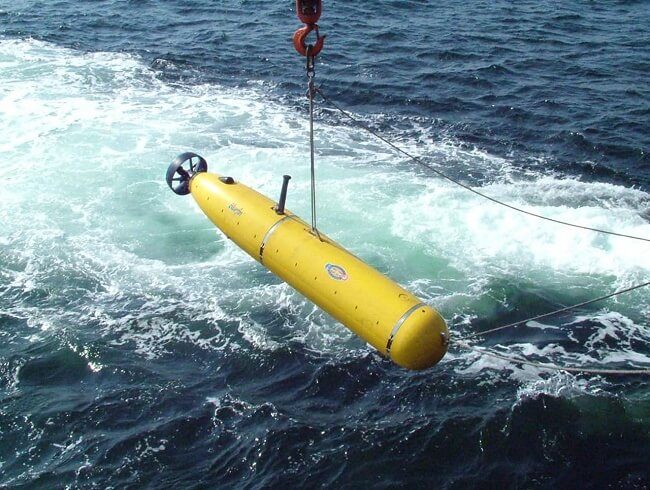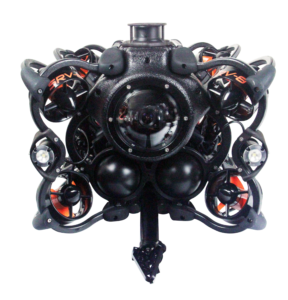
The Mohawk ROV in Flower Garden Banks National Marine Sanctuary. Photo provided by NOAA.
The underwater community loves its acronyms, especially when it comes to robots.
ROV, AUV, HOV — it seems that the industry cannot get enough of underwater vehicles and their lingo, whether we are talking about the glider you buy to explore your local shoreline or the deep sea submarine piloted by James Cameron into Challenger Deep.
But if you are new to the industry or to robots, the topic can be confusing, especially when it comes to the two most popular underwater bots out there: ROVs and AUVs. What’s the difference between an ROV and AUV? Are either the future of ocean technology? Which one is best for your mission?
The answer is not that clear. Each vehicle offers clear advantages and drawbacks. Whether they are the “best technology” depends on what you need them for and what the budget for your project is.
So let’s get into it.
An ROV catches footage of the elusive sperm whale in deep water. Video by Nautilus Live.
ROV (Remote Operated Vehicle): The Swiss Army Knife of Underwater Robots
An ROV is an unoccupied vehicle connected to a ship by a group of cables, which allows a human to command it from above the surface.
Because you can control them directly, ROVs can serve many different uses (hence the affectionate nickname as a Swiss Army Knife), whether its hull inspection or collecting evidence from the sea floor.
ROVs best suit your needs if your project requires hands-on supervision or a human’s deft touch. They usually perform the work of human divers in cases where diver safety is called into question, such as working in deep water.
For your budget, ROVs offer the most flexibility in terms of price: you can purchase one for as low as $1,000. But since any underwater vehicle is an investment of resources, consider all your needs before buying: you want your robot to stay useful for the long-term.

An AUV being lowered into the water. Credits: Mierlo/wikipedia.org
AUV (Autonomous Underwater Vehicle): The Smart Car for the Ocean
As their name implies, AUVs are autonomous underwater vehicles that can act on their own. Ideal for longer scientific surveys and missions where constant human supervision is not needed, AUVs can be preprogrammed with an assignment and location. Once their assignment is complete, the robot will return to its location.
If your project involves collecting samples or manipulating the environment, consider an ROV. But if you want to create detailed maps or measure water properties, an AUV will help you get the job done efficiently. Just drop it in the water, go on with your other work, and return to pick it up from the surface when it completes its task.
Why settle? The ROV/AUV hybrid offers the best of both worlds
Like we said before, you want your robot to stay useful for the long-term, so flexibility is the name of the game. An ROV/AUV hybrid allows you to supervise the vehicle for careful work, then detach it when you want it to go on autopilot.
Robots will play a key role as we continue to explore the ocean floor. Most of the work will be done by ROVs, AUVs, and ROV-AUV hybrids rather than HOVs, which are human-occupied submarines. Your robot will be your partner underwater for a long time.


